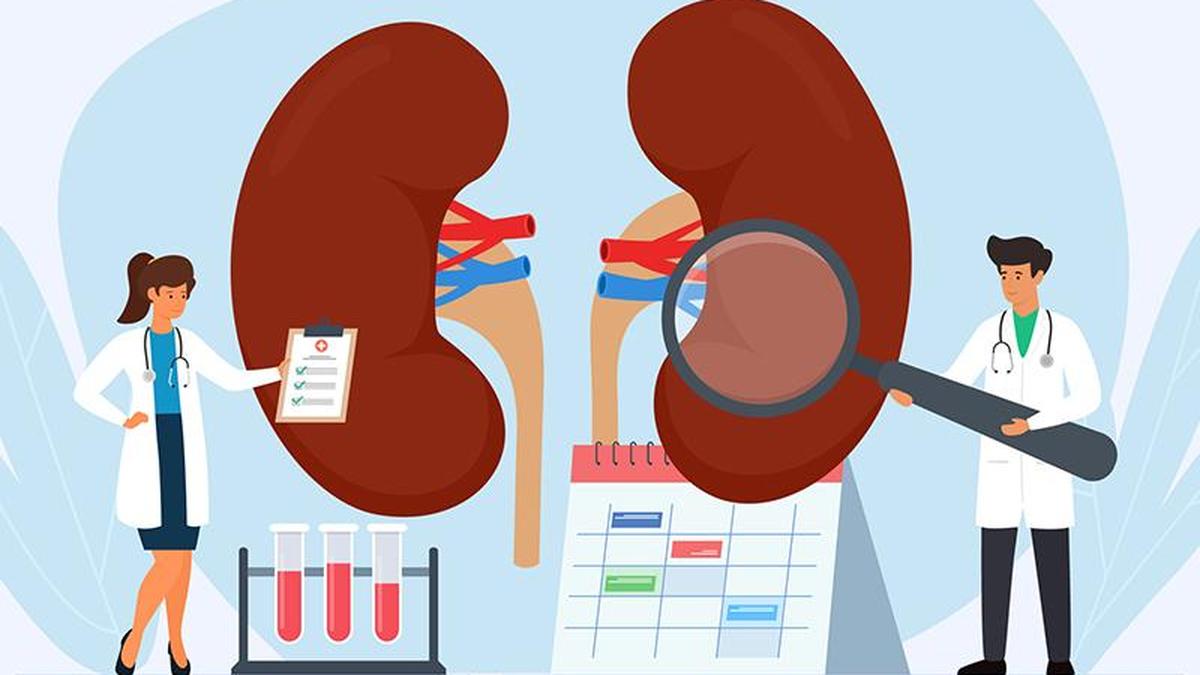
Of the 75 patients studied, the mean age was 41.7 years, with 68% being men. A majority (77.3%) relied on groundwater as their primary drinking water source. 40% had used alternative medicine in the past and 46.6% underwent kidney biopsies.
| Photo Credit: NAZARKRU
A study has revealed that chronic kidney disease of unknown aetiology (CKDu) is emerging as a significant cause of kidney failure in Telangana, including Hyderabad, particularly affecting younger, economically productive individuals who have no history of diabetes or hypertension, the usual risk factors for chronic kidney disease (CKD).
The study, led by senior nephrologists from the government-run Osmania General Hospital (OGH) and Apollo Hospitals, examined 75 patients and was published in the Indian Journal of Nephrology in August 2024. Conducted between March 2021 and November 2022 at OGH, it was a single-centre, prospective observational study designed to document the clinical and epidemiological risk profile of CKDu patients in Telangana and to assess their kidney histology.
Of the 75 patients studied, the mean age was 41.7 years, with 68% being men. A majority (77.3%) relied on groundwater as their primary drinking water source. 40% had used alternative medicine in the past and 46.6% underwent kidney biopsies.
The histological analysis, which examines kidney tissue under a microscope, showed that 54% had global glomerulosclerosis, meaning that more than half of their kidney’s tiny filtering units (called glomeruli) were scarred and no longer functioning properly. Around 31% had interstitial fibrosis and tubular atrophy, a condition where the spaces between kidney cells harden and the tiny tubes that help filter waste begin to shrink. Another 34.3% had periglomerular fibrosis, or scarring around the filters, and 85.7% showed signs of interstitial inflammation, indicating swelling and irritation in kidney tissue. The study also found that people with high blood pressure were more likely to experience faster kidney damage.
“The main finding of the study is that patients with CKD who satisfy the CKDu phenotype as defined from the known ‘hotspots’ are not uncommon elsewhere. These cases are not limited to those with traditional risk factors such as agriculture. We document the existence of these cases in Telangana, this is the first report of its kind,” said Dr. Manisha Sahay, Head of Nephrology at Osmania General Hospital.
Among the patients studied, 69% were non-oliguric, meaning they were still passing a normal amount of urine despite having kidney problems. About 28% reported nocturia, a condition in which people wake up frequently at night to urinate, and 77.3% said they often felt easily tired or weak. Swelling (known medically as oedema) was seen in 13.3% of the patients.
Most participants were from Hyderabad (42.7%), followed by Rangareddy district (10%). About one-third (33%) had hyperuricemia, meaning higher-than-normal levels of uric acid in their blood. 40% were already in stage 5 chronic kidney disease, the most severe stage, while seven patients (9.3%) needed renal replacement therapy, such as dialysis, at the time of diagnosis.
Published – October 26, 2025 06:52 pm IST


